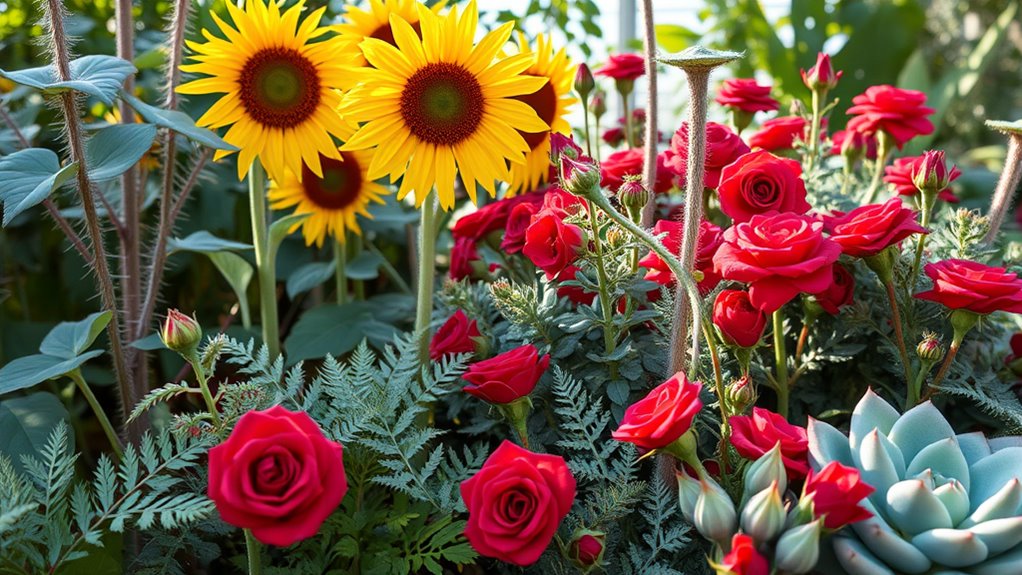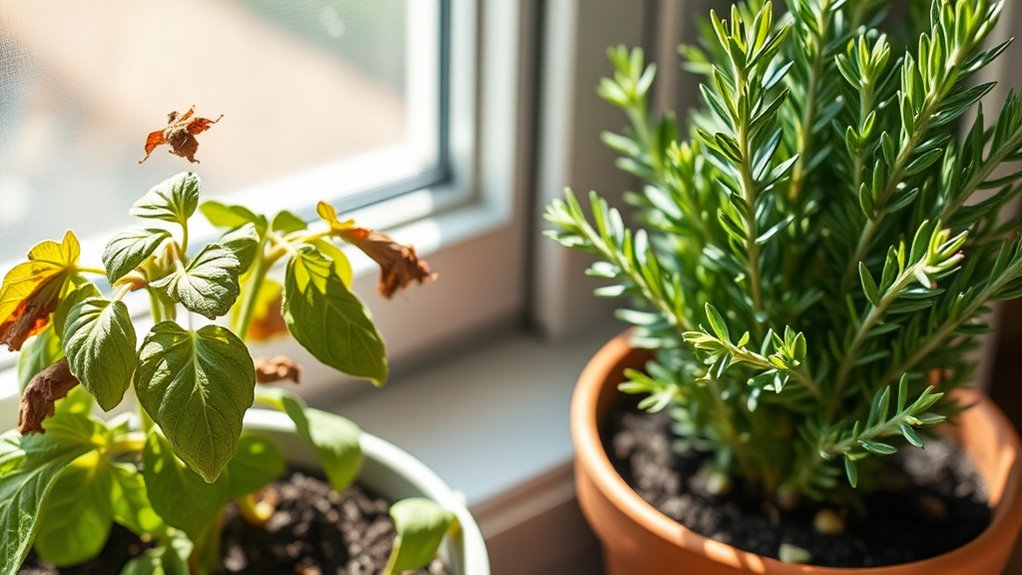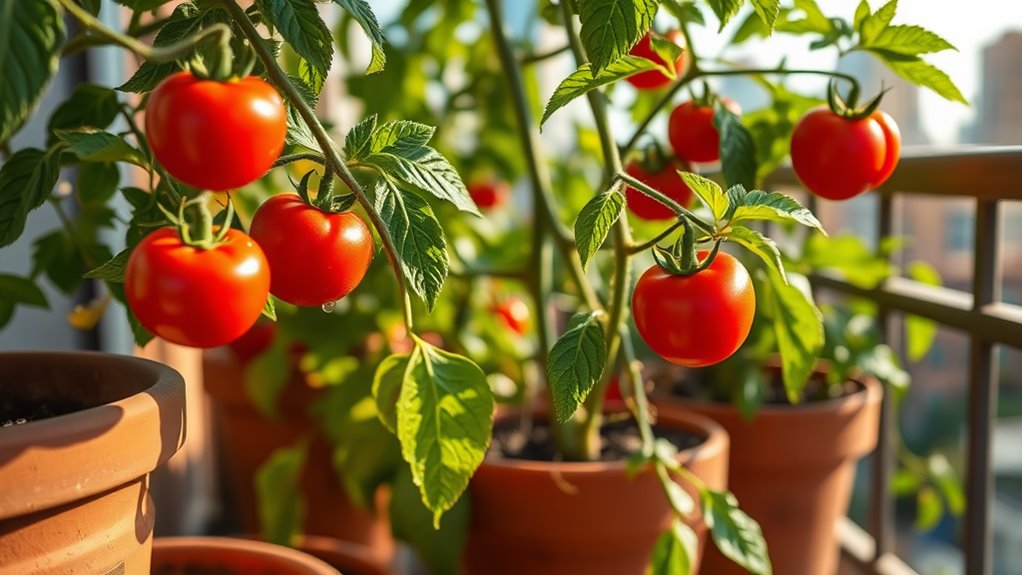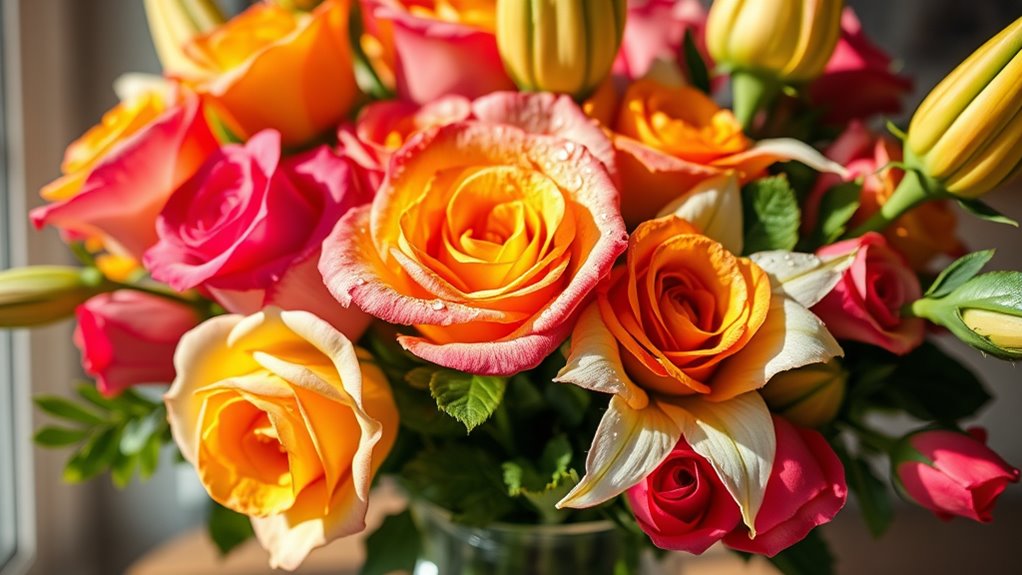These 5 Flowers Attract Butterflies Like Crazy
You’ll attract butterflies to your garden with these five low-maintenance stars. Butterfly Bush (Buddleja davidii) lures them with fragrant, nectar-rich flowers that thrive in full sun. Coneflower (Echinacea purpurea) offers blooms for larvae and adults, resisting drought effortlessly. Zinnia’s bright florets draw swallowtails and boost biodiversity. Milkweed (Asclepias) provides essential nectar and host sites for monarchs. Lantana’s vibrant clusters entice various species with high-sugar rewards. Explore these options to elevate your pollinator paradise.
Key Takeaways
- Butterfly Bush attracts butterflies with its nectar-rich, fragrant flowers that thrive in full sun.
- Coneflower provides nectar from June to October and serves as a host plant for butterfly larvae.
- Zinnia draws in butterflies like swallowtails with its bright, nectar-packed blooms.
- Milkweed offers essential nectar and host sites for monarch butterflies during migration.
- Lantana features vibrant, high-sugar nectar in dense clusters, appealing to Monarchs and Swallowtails.
Butterfly Bush
The Butterfly Bush, scientifically known as Buddleja davidii, attracts butterflies with its nectar-rich, fragrant flowers. You plant this shrub in your butterfly garden to support diverse species, as its long, cone-shaped blooms offer high-energy nectar.
It’s a key component among butterfly garden flowers, thriving in full sun and well-drained soil. You’ll observe how its vibrant colors and scent draw in pollinators, boosting local ecosystems. Moreover, incorporating Butterfly Bush in your garden can aid natural pest control by attracting beneficial insects that help manage garden pests naturally.
For optimal growth, prune it annually; this encourages more flowers, ensuring a steady supply for butterflies. Remember, it’s drought-tolerant once established, making it an easy choice for your garden.
This shrub is one of the five specific flower varieties that can help create a thriving butterfly-friendly environment in your garden.
Coneflower
Coneflower, scientifically Echinacea, draws butterflies to your garden through its nectar-filled, daisy-like flowers. Echinacea purpurea is particularly effective, with its large heads providing ample nectar for species like monarchs. You’ll grow it easily in USDA zones 3-9, where it serves as a host plant for larvae and blooms from June to October. Its deep roots ensure drought resistance, maintaining vibrant colors that act as visual cues.
Moreover, Coneflower is one of the resilient flowers that thrive in poor soil conditions, making it an ideal choice for low-maintenance gardens.
| Aspect | Scientific Detail | Butterfly Benefit |
|---|---|---|
| Nectar Content | High sugar concentration | Fuels long migrations |
| Flower Structure | Composite inflorescence | Easy proboscis access |
| Growth Habits | Perennial, upright stems | Consistent food source |
This makes Coneflower essential for your butterfly-friendly garden. Inspired by my own experience with organic gardening, planting Coneflower can lead to a surprisingly abundant harvest.
Zinnia
Zinnias, from the genus Zinnia, draw butterflies to your garden with their bright, nectar-packed blooms that species like swallowtails favor.
These annual plants produce composite flowers with ray florets that offer abundant nectar, making them ideal for pollinators. You’ll notice zinnias’ daisy-like structures provide easy perching spots, enhancing feeding efficiency.
Scientifically, their high pollen and nectar output supports butterfly populations, boosting biodiversity. Moreover, zinnias can assist in deter pests when paired with other plants in your garden.
Plant them in full sun with well-drained soil; you’ll attract more species, as zinnias’ vibrant hues signal food sources. This promotes a thriving ecosystem without extra maintenance.
To further enhance your garden’s health and yields, try companion planting zinnias alongside vegetables to naturally deter pests.
Milkweed
Milkweed, from the genus Asclepias, draws butterflies like monarchs with its nectar-filled clusters that support their migration and reproduction.
You’ll notice its vibrant blooms provide essential nectar, fueling butterflies’ energy needs during long journeys. As you plant milkweed, you’re aiding monarch populations by offering host sites for egg-laying; the plant’s toxic sap protects caterpillars from predators.
Scientifically, Asclepias species vary in form, from tall perennials to compact varieties, each optimizing pollination through intricate flower structures.
You can enhance your garden’s biodiversity by selecting native types, ensuring sustained butterfly habitats without chemical interference. This approach aligns with companion planting principles to boost overall garden productivity.
Moreover, milkweed supports natural pest control by fostering a balanced ecosystem that naturally wards off garden pests using plant-based strategies.
Lantana
Lantana, from the Verbenaceae family, draws butterflies with its dense flower clusters that offer abundant nectar.
You’ll find its vibrant, multicolored blooms—ranging from yellow to red—thriving in full sun and well-drained soil, making it ideal for your garden.
As a drought-tolerant shrub, it requires minimal maintenance, so you won’t fuss over watering once established.
Scientifically, Lantana‘s umbel inflorescences provide high-sugar nectar that attracts species like Monarchs and Swallowtails, boosting pollination.
Additionally, incorporating Lantana into your garden can help implement organic tips to naturally enhance plant health and growth.
For optimal growth, gardeners can also apply an organic fertilizer using everyday ingredients to enrich the soil and promote vibrant blooms.





